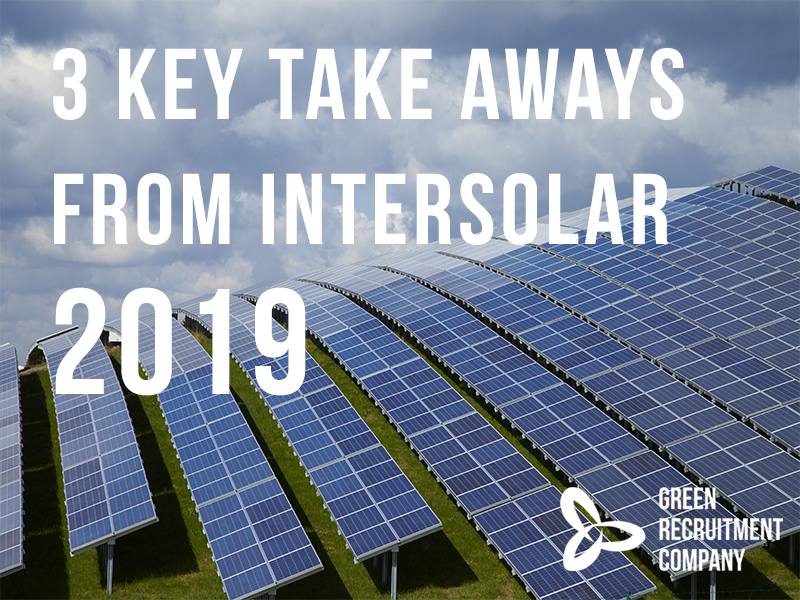
Three Key Takeaways from Intersolar 2019
Last week several of the team at The Green Recruitment Company were in Munich at the annual Intersolar event. As always the event provided a valuable insight into the key trends on the horizon in the global renewable energy market.
My view of the event was that it was a fantastic opportunity to stay at the forefront of the technological advances within the industry and a great chance to see what all our clients will be working on in the year ahead and beyond.
It was clear from Intersolar this year that several key trends were emerging amongst the businesses there.
Who will be adding the most capacity in PV in the next five years?
Everyone we spoke to at Intersolar agreed that China had far and away the most potential for Solar PV additions in the next five years. The high scenario puts China at adding over 350 GW of PV in the next five years, and the low scenario still sees China adding over 200 GW.
The other countries that had the most PV Potential were India (120 GW,) The US (88 GW) and Australia (45 GW.) Even among smaller players in the market, there was an average of over 25GW in the next five years, with a global spread to slated PV additions. A key takeaway on all these new additions is that across the board the general feeling is that the political support of these products is universally positive.
Changes to Asset Management
As the Solar Market has developed more investment has come into the market. Investment is often split over disparate geographies, encompassing varying environmental and regulatory challenges, and as such Asset Managers are increasingly needing to adapt.
We heard a lot at Intersolar about “Asset Management 2.0,” adapting to the new expectations of investors. This model does away with traditional linear management approaches, and transitions to an asset-centric, information based management approach, addressing transparency and efficiency issues. It also helps Asset Managers increase ROI on their projects.
This new model is symptomatic of the increase in investment into Solar PV and from conversations throughout the conference it is hoped that it will increase returns on assets, continuing to grow the industry.
Emerging Markets – Challenges and Solutions
Whilst we’ve covered the exciting potential of the big players in Solar adding to their PV capacity in the years ahead, there is also an appetite to help emerging markets develop, with over 100GW identified in the Middle East, Africa and South Asia. Whilst there are many economic, institutional, technical and financial challenges, the overall mood was positive and solution-led. There are many initiatives that are supporting the scale-up of solar including financial support in the form of loans, and technical support such as grid integration studies. These make emerging markets even more enticing for investors, and mitigates potential risk.
Overall, the mood at Intersolar was of great optimism, with excellent opportunities both in developed and developing markets, backed up with strong political backing. For more information and insight into the Renewable Energy market, please make sure you follow our page on LinkedIn, as well as keeping up to date with our latest Green Insider, where we explore global trends in more depth.
